For additional information relating to this article, please contact:
July 03, 2015FAMILY INCOME: SUB-PROVINCIAL 2013 Statistics Canada recently released family income and related variables derived from personal income tax returns for 2013.
This shows that median income in Nova Scotia (all sources of income across all family types) was $70,020 or 91.5 per cent of the national average. Across the country, median incomes are lower outside of urban areas.
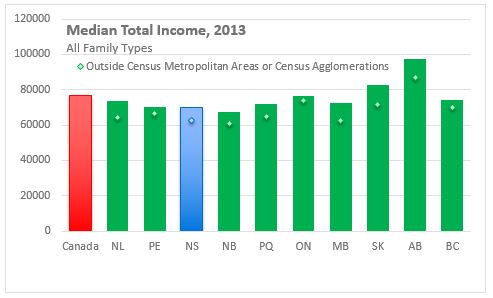
In Nova Scotia, median incomes outside Halifax are 76-79 per cent of that city's levels.
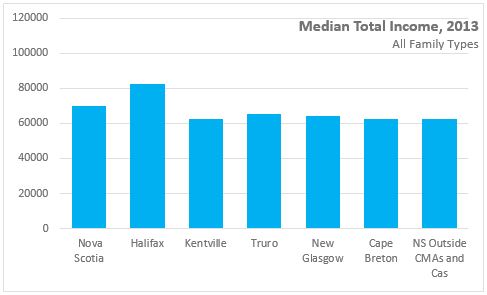
These differences in income are explained by: differences in family structures, differences in sources of income and differences in income levels themselves.
Couple families tend to have higher incomes, particularly for those couples with dual incomes from employment. However, the median employment income of two-earner families is more than double that of families with single earners (either in a couple or as an unattached individual). Females providing single incomes to a couple family have lower earnings than their male counterparts in similar family structures. These patterns hold for Canada, Nova Scotia and the communities reported within Nova Scotia.
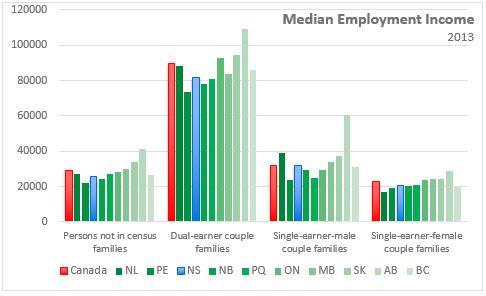
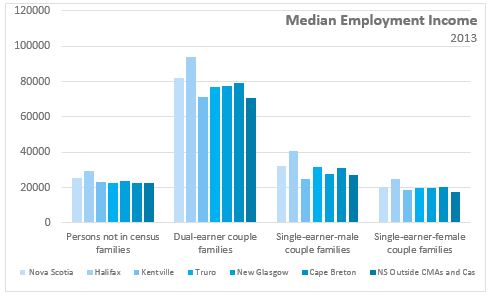
In Nova Scotia's case, the share of couple families with two incomes is lower than the national average, particularly outside Census Metropolitan Areas and Census Agglomerations. In fact, the share of dual-earning families outside CMAs and CAs is lower in NS than in comparable areas in any other province.
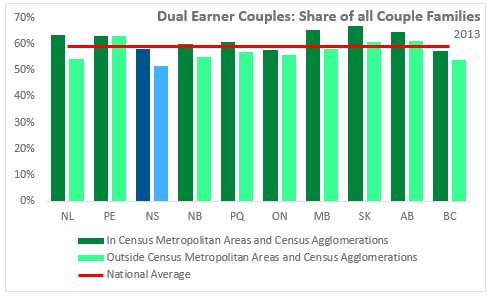
Differences in employment earnings account for the bulk of variation in total income across the country. Comparing average income by source for all families, NS employment earnings are over $10,000 below the comparable national average. However, NS earnings from investments/pensions/RRSPs are only slightly below the national average while CPP/OAS payments are higher than the national average. Although average Employment Insurance payments are above the national average, Nova Scotians have below average incomes from other government transfers (outside EI, CPP and OAS).
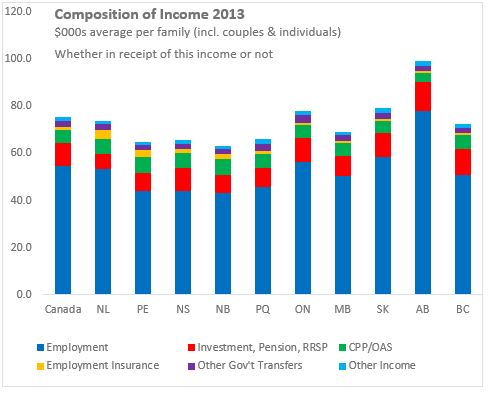
Likewise, higher employment and investment earnings in Halifax explain much of the differences in family income from other communities in Nova Scotia.
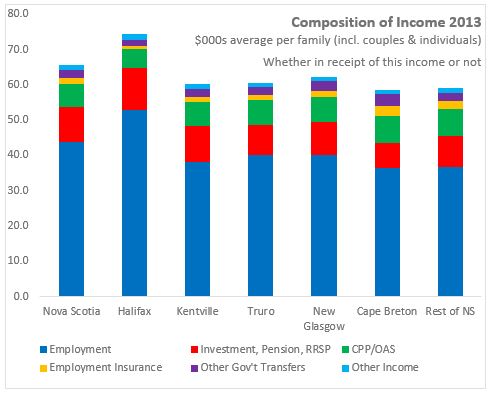
Note: measurement of “average income per family” includes all families, whether in receipt of this type of income or not. For each income source, a smaller number of recipient families have a higher income per receiving family.
Source: Statistics Canada CANSIM tables 111-0009, 111-0014